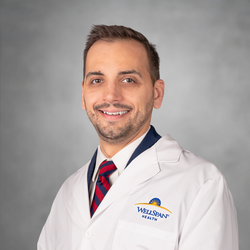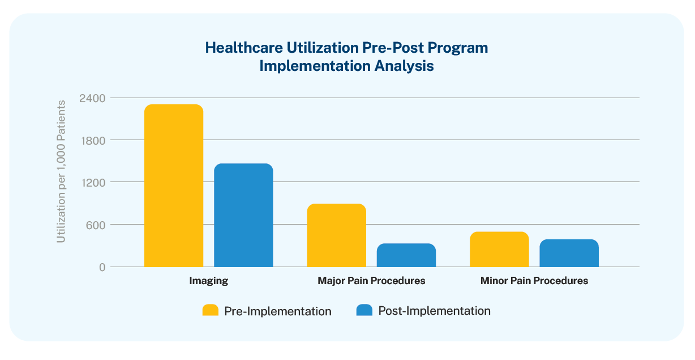By Sergey Borodianski, MD, physician lead of the WellSpan Restorative Pain Program
Comprehensive programs for chronic pain are emerging across the country, but many are designed in a way that limits patient access and benefits. Some programs operate outside health systems and require patients to pay out of pocket. Programs within health systems tend to offer few touchpoints and small teams that can't address the full complexity of chronic pain.

Sergey Borodianski, MD
The WellSpan Restorative Pain Program is leading the way with a different approach. It’s a 12-month program combining half a dozen specialties — making it the only long-term, transdisciplinary program for chronic pain available at an integrated health system in the U.S.
Our approach and outcomes have drawn attention both within and beyond the pain medicine field. I recently discussed our program at a series of conferences, with audiences ranging from pain medicine specialists to United Nations officials. Below are the three things they most wanted to know.
What are your results?
One of the clearest signs of success is how our program affects patients’ use of care across the system. People with chronic pain often make multiple visits to primary care, specialty care and the ED in search of answers and relief. This is one reason it’s the most expensive condition in health care — more than the cost of diabetes and cardiovascular disease combined.

Data on a recent cohort of 79 patients shows a significant impact: During the first six months of the program, patients required 46% fewer imaging tests and 45% fewer major procedures compared to the six months before they started.
Decreasing utilization means reducing backlogs for providers and improving access for other patients. For someone living with chronic pain, it means something even better: no more hunting for answers. They finally found something that works.
What do patients think of the program?
Many conference attendees wanted to know if patients think their yearlong experience is worthwhile. Overwhelmingly, they think it is. And they demonstrate this in many ways.
They become advocates for what they’ve learned
Our team uses Pain Reprocessing Therapy to help patients change how they respond to pain signals. Many are so inspired they share what they’ve learned with other people.
For example, one of my patients felt her back pain increased whenever it rained. She was initially resistant to changing her mindset, but much to her credit, she gave it a shot.
One day a storm was coming, and she noticed her body tensing up as she worried about her back flaring up. Instead, she told herself, “I’m not going to expect the pain. I’m just going to relax.”
It worked — no flare-up — and she instantly called her friends and family to celebrate and teach them what she’d learned.
They apply their learnings to other areas
One patient with anorexia nervosa came to us because of chronic pain in her thighs and back. She learned to reprocess her pain so effectively that she’s using the same methods to change her relationship with eating.
In her words, “I’m finding joy in food again.”
How do you manage billing?
One of the biggest barriers to creating a transdisciplinary pain program is figuring out how to charge for it. Our program includes providers ranging from physical medicine specialists to experts in physical therapy, behavioral therapy and acupuncture. Each patient sees a different combination of providers at each visit, and they total more than 20 visits over the course of the program.
With that much variability, a traditional fee-for-service model isn’t viable. Depending on which services are necessary, one patient’s time in the program could cost twice as much as another’s.
So, although care would be variable, we decided that cost would be predictable. We charge a flat fee for each appointment, regardless of which providers are involved.
To make the flat fee possible, our entire team commits to prioritizing our patients’ needs above everything else. We don’t stress about filling our calendars. Instead, we trust that each of us will be light some days and heavy other days. And we agree it’s worth it to meet each patient where they are, with whatever they need that day.
